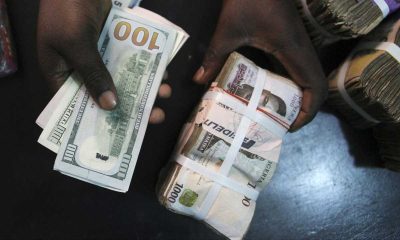Despite a limited income that exposes individuals to poverty, devaluation of the Nigerian local currency in addition to steep headline inflation and unemployment has worsened Nigerians living conditions.
Key macroeconomic metrics have unfavourably positioned Nigerians fortune, resulting in automatic downward income shift as prices increased along with naira depreciation.
Naira has dropped from N197 to a dollar at the official window between 2015 to as high as N410 in the Nigerian Autonomous Foreign Exchange rate in 2021 with joblessness peaked at 33.3%, the latest data reported by the National Bureau of Statistics in the third quarter of 2020.
While the local currency has become less valuable, in what appears like multiple out of control issues for holders of the currency, the inflation rate has worsened the purchasing power.
READ ALSO: Nigeria’s inflation rate drops as food inflation rises in July
Though, slowdown for the fifth consecutive month, headline inflation jumped for 19 months straight while food prices became unbearable for the citizens despite a poor job creation record.
With the rising misery index, Nigeria unceremoniously became the poverty centre of the world despite her resource capability endangered by a core focus on oil and gas extractions.
Accounting for the largest chunk of government earnings, there is a bleak future for Nigerian oil revenue as the United States, a major crude oil consumer, plans to replace electric-powered automobiles by 2025. International politics and competitive advantages seeking countries, China, would likely follow suit, sources told MarketForces Africa.
In the black market, Naira tested N585 on Monday after the previous week’s depreciation, though a moderate recovery was seen at the Investors and Exporter Window last week.
With rising production costs amidst dollar shortages, private sector investments remained below the pre-pandemic period. Though, the Purchasing Manager Index shows the economy is in recovery mode.
In the second quarter, Nigeria’s gross domestic product expanded more than 5% after a tepid growth reported in the first quarter of the year. The fresh growth recorded in the second quarter of the year, according to some investment banking firms’ macroeconomic notes, was flattered by the low base period in 2020.
“It is like when you are coming from zero level, anything positive would put you on a higher footing and make you look like an outperformer’, MarketForces Africa gathered from experts.
Despite increasing spending by Nigeria’s monetary authority to drive the food sector towards self-sufficiency, prices have been on the high side while the government’s wage remains inflation exposed.
The value of the local currency has made many Nigerians in both informal and civil service spaces poorer as cash income cannot buy as much after devaluation that is further peppered by inflation.
Even with stable prices of crude in the global market, technical issues and Shell’ force majeure among other supply chain troubles keeps volume production under the Organisation of Petroleum Exporting Countries (OPEC) quota.
The way forward for Nigeria to maintain price stability is to devalue the local currency to a level where it would be difficult to speculate on the black market, analysts agreed at the MarketForces Africa forum.

 Business1 week ago
Business1 week ago
 Latest4 days ago
Latest4 days ago
 Latest5 days ago
Latest5 days ago
 Business5 days ago
Business5 days ago
 News4 days ago
News4 days ago
 Crime5 days ago
Crime5 days ago
 Business4 days ago
Business4 days ago
 Politics5 days ago
Politics5 days ago

